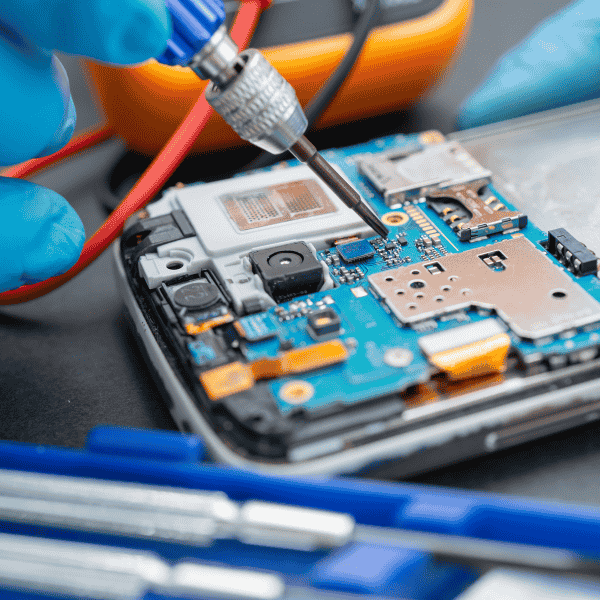What is Mobile Devops and why it matters for apps today?
Mobile Devops means applying CI, CD, testing, and release health practices to iOS and Android with the bits that stores and devices demand. The payoff shows up in shorter lead time, fewer bad releases, and a steady cadence that product can trust.
Plain definition and scope for teams
Mobile Devops joins version control, build automation, device-matrix testing, beta distribution, store submission, monitoring, and rollback paths into one flow. It covers iOS signing, Android bundles, staged rollouts, and crash tracking after launch. You wire each stage so a commit moves forward only when checks pass, and you keep telemetry flowing from real users back to the backlog for the next sprint.
When Devops is not enough for mobile
Traditional pipelines stop at deploy, while mobile work continues through TestFlight and Play tracks. Reviews, certificates, and device variance add risk, so teams need extras like signing automation, store metadata sync, and progressive rollout controls. Without those, a smooth backend release still stalls on app stores or fails on a subset of handsets with odd behaviors that do not show in simulators.
Mobile Devops pipeline stages end to end
A typical pipeline begins with trunk-based commits, runs parallel unit and UI suites on device clouds, signs artifacts with managed credentials, pushes builds to internal testers, then promotes to external beta, and finally ships with staged rollout. After release, observability feeds crash-free users and ANR rates into dashboards. If health dips, you pause the rollout, or flip a feature flag to reduce impact. Apple phased release and Google staged rollout support this pattern.
Key differences between Devops and mobile development needs
Mobile Devops deals with code signing, OS fragmentation, app review, and store gating. Those frictions sit outside regular server deployments and require dedicated automation and policy.
Code signing and provisioning hurdles
iOS needs certificates, provisioning profiles, and entitlements aligned with bundle IDs. Android signing is simpler yet still needs keystore hygiene across lanes and envs. Teams manage secrets in CI with restricted access and rotate material on a schedule. GitHub Actions documents installing Apple certs on macOS runners, useful for controlled signing in workflows.
Certificates and profiles checklist
App store review and rollout delays
Submissions hit human and automated checks, then move to phased or full release. With Apple you can release in phases and stop anytime if metrics slip. On Google Play you can stage to a percent and raise that fraction over time. Plan buffers in roadmaps because review timing can vary week to week.
Device fragmentation and OS updates
Real users run many OS versions and device classes. Simulators miss radio quirks, vendor overlays, and performance cliffs. Use a device cloud for coverage and keep a focused internal lab for top markets. AWS Device Farm and BrowserStack App Live give real hardware and helpful network toggles to reproduce weirdness.
How Mobile Devops reduces release risk and cycle time?
You cut risk by moving feedback left and by gating promotions with data. You cut cycle time by automating everything that can break while humans sleep.
Faster feedback loops with CI triggers
Each commit triggers builds, tests, and lint checks on fresh runners. Parallel jobs keep queues short and prevent devs from queuing behind long UI suites. Short feedback leads to smaller batch sizes and simpler fixes. GitHub-hosted runners and self-hosted macOS nodes keep iOS pipelines flowing when concurrency spikes.
Automated tests gate every merge
Unit, integration, and UI tests run with clear thresholds on pass rate and flake allowance. You quarantine unstable tests quickly and resume only after investigation. Device-matrix execution exposes OEM skin issues. Stopping merges on red builds sounds strict, yet the calm that follows saves weekends and nerves.
Rollbacks and hotfix paths for teams
You need a hotfix lane that cherry-picks minimal changes, signs cleanly, and pushes to beta and production tracks. On Play you can halt a staged rollout or lower the percent. On iOS phased release lets you pause then ship to all users once stability recovers. These knobs keep outages small.
Feature flags for safe launches
Feature flags separate deploy from release, so code lands behind a switch, then turns on for 1 to 5 to 25 percent with stickiness controlled by user or session. LaunchDarkly and GitLab support progressive or percent rollouts, following Unleash strategies that keep user experience consistent.
Mobile Devops for faster hotfix cadence
Well-shaped pipelines carry a hotfix from commit to store track faster because signing material and metadata already live in CI. Beta testers verify the fix, then staged rollout narrows blast radius. Teams avoid panic by rehearsing this path during calm weeks instead of guessing under fire.
Mobile specific challenges that Devops must solve today
Mobile demands that pipelines reflect network realities, crash grouping, and privacy rules. These areas decide if a release keeps rolling or stops at 5 percent.
Network variability and offline use
Apps must handle flakey 3G or captive portals without spinning forever. CI can’t fake all edge cases, so device clouds with network shaping help reproduce timeout issues. Throttle bandwidth, add packet loss, and replay the worst hotel wifi. You harden caching, idempotent calls, and retry policy after each incident.
Crash analytics and error grouping
Crash-free users and sessions are core stability metrics. Crashlytics defines them clearly and tracks regression across versions. Watch cohort health and spot spikes per device model. Guard pages near release show if the latest build trends safe before raising rollout percent.
Data privacy and permissions rules
Permissions prompts must match features, and storage of PII needs review against internal policy. Follow MASVS for baseline control objectives like safe logging and secure local storage. Treat SDKs as supply chain risk that requires review and periodic re-verification, not a one-time install.
Core pillars of a reliable Mobile Devops pipeline for teams
Pipelines stay healthy when each pillar has clear ownership, budgets, and guardrails. You can’t bolt them on later without churn.
Version control and trunk based flow
Trunk-based development limits long-lived branches, encourages small PRs, and pairs nicely with short-lived feature flags. The effect shows up as fewer merge conflicts and simpler reverts. The team wins consistency, even if early days feel a bit strict to folks used to big batch changes.
Build automation with reusable steps
Scripted lanes keep builds predictable. fastlane orchestrates signing, screenshots, and distribution, and it fits GitHub or GitLab runners. Reusable actions and caches shave minutes off each build and cut frustration during peak hours when everyone pushes at once.
Test automation across device matrix
Suites cover unit logic, UI workflows, and network faults, running on a curated device list per market. AWS Device Farm supports both automation and remote access, useful for debugging once a failure appears. Store slow tests in nightly plans and keep PR checks focused on fast feedback.
Continuous delivery to testers and beta
Your pipeline should promote successful builds to internal testers, then external beta. Apple’s TestFlight scales to thousands of testers and smooths feedback intake. For Android, internal, closed, and open testing tracks give options before production rollout.
Monitoring and feedback collection
Dashboards show crash-free users, ANR rate, cold start, and install success. Firebase added release monitoring that helps watch stability right after rollout. These signals tie directly to the Go or Pause decision during staged releases.
Mobile Devops KPIs that matter
Pick stable, comparable numbers: crash-free users, ANR rates, lead time for change, mean time to restore, and percent of staged rollouts that paused. Android vitals defines core ANR and crash rate metrics that influence Play visibility, so keep those green.
CI and CD for apps from commit to app store delivery steps
This stream must be boring in the best way. Each step should be obvious, visible, and recoverable when something goes wrong.
Branching strategies that scale well
Keep trunk as the only long-lived branch. Use short feature branches with required checks. Hotfix branches ride a special lane with stricter gates and faster promotion. Limit manual approvals to places where risk rises, like production track pushes during traffic spikes.
Fastlane lanes for iOS and Android
Define lanes for build, test, beta, and release. iOS lanes install certs, sync profiles, and submit to TestFlight. Android lanes create bundles, sign with release keys, and upload to Play. Fastfile params keep secrets out of code and map paths cleanly across runners.
# Fastfile excerpt
default_platform(:ios)
platform :ios do
lane :beta do
match(type: "appstore") # signing sync
gym(export_method: "app-store") # build ipa
pilot(distribute_external: true, groups: ["beta"])
end
end
platform :android do
lane :beta do
gradle(task: "bundle", build_type: "Release")
upload_to_play_store(track: "internal", aab: "app-release.aab")
end
end
Parallel jobs reduce pipeline time
Run unit tests, UI shards, and lint in parallel to keep PR waits short. Cache dependencies aggressively and pin tools to specific versions. On iOS you require macOS runners to build and sign, so plan concurrency for busy hours and have fallback self-hosted nodes when hosted capacity gets tight.
Test automation for devices simulators and real networks
Testing proves behaviors on realistic surfaces. You mix layers and environments to keep signal strong and noise low.
Unit UI and integration layering
Unit tests guard logic and are blazingly quick. UI tests validate happy paths across devices. Integration tests hit staging backends with seeded data to cover auth, payments, and sync flows. Keep a pyramid shape with many fast tests at the base and fewer heavy ones at the top to avoid slow feedback.
Mocking APIs and network conditions
Service virtualization lets you test failure modes without punishing staging. Simulate 429s, TLS errors, and long-tail timeouts. Device clouds help shape bandwidth and packet loss so you can validate retry policy and user messaging. Teams write playbooks for the few types of failure they see often and automate those cases.
Device clouds and on premise labs
Real devices catch vendor skin bugs and sensor oddities that simulators gloss over. Clouds give reach across models, while an on-site lab covers core target phones you use daily. AWS Device Farm supports both automated suites and remote access sessions, which speeds debugging of device-only faults.
Flaky test control and quarantine
You keep stability by quarantining flaky tests fast, then tracking fixes in the next sprint. Flakes waste hours and erode trust in CI. Tag them, skip in PR gates, and run in nightly suites until repaired. Publish a tiny weekly report so flakes don’t become invisible debt.
Mobile Devops test pyramid basics
Teams succeed with a pyramid showing heavy investment in unit tests, a moderate set of component or integration checks, and a small but meaningful batch of end-to-end UI journeys. The shape keeps pipelines responsive and makes each failure cheap to reason about.
Release management and phased rollouts for app stores
Release management governs how builds move from beta to production while health checks decide if you pause or press on.
App distribution with TestFlight and Play
TestFlight supports internal and external beta at scale and centralizes feedback. Google Play tracks cover internal, closed, open testing, and production with staged rollout options that protect users while you watch vitals. Both ecosystems now support phased promotions that teams can stop or expand on signal.
Phased rollout steps for safer launches
Store metadata and screenshots flow
Keep store text, screenshots, and privacy labels in source control. Generate screenshots in CI to avoid stale assets. Validate locales during PR to prevent publishing surprises where one language misses a mandatory field and blocks the whole release.
Phased rollout knobs
| Surface | Control | Pause support | Notes |
|---|---|---|---|
| App Store | Phased release | Yes | Promote to all any time. |
| Google Play | Staged rollout | Yes | Increase fraction gradually. |
How to start Mobile Devops in a small product team?
Start with one platform, one app, and one KPI per stage. You build confidence by shrinking scope, then expand once basic muscles work.
Pick one app and one platform first
Pick Android or iOS based on team experience and market share. Wire a simple pipeline, run basic tests, and ship to internal testers. Resist multi-platform setup until your first path feels boring and stable. Small wins usually pull the rest of the organization along without extra pep talks.
Define one KPI per stage to track
Choose crash-free users for stability, lead time for delivery speed, and review duration for store friction. Publish each number at standup so progress becomes shared truth, not a hunch. Keep fewer metrics yet watch them daily during rollouts to cut noisy debates.
Mobile Devops starter toolchain list
Select version control, CI, flag service, crash analytics, and a device cloud that fits budget. Avoid tool sprawl early. Stick to one CI for pipelines and add a second only if a hard need appears like special macOS capacity for iOS builds. fastlane helps keep steps consistent across platforms.
Security and compliance practices for regulated apps
Security must fit into lanes without slowing releases into the mud. Bake checks into the same flow as tests.
Secrets management and code signing
Keep certificates and keystores encrypted, bind access to service accounts, and audit usage. Rotate material and alert when profiles near expiry. GitHub Actions shows a clean approach for installing Apple certs within workflows that keeps sensitive items outside repo history.
Third party SDK risk assessment
Treat SDKs as supply chain. Review permissions, network calls, and data flow. Track versions and kill switches for quick removal if an SDK causes instability or policy violations. Keep a shared matrix that flags ad SDKs differently from analytics or payments.
OWASP MASVS aligned controls
MASVS gives a shared baseline for mobile threats and control objectives, covering storage, crypto, auth, and tamper resistance. Use it for design reviews and test planning so security stays measurable instead of vague claims.
PII handling and consent flows
Store only what you need, encrypt at rest, and enable deletion requests. Keep consent in plain words and maintain easy paths to switch off tracking. Mobile prompts and system dialogs do not excuse sloppy handling of data once collected.
Observability for mobile logs crashes and performance
Observability gives the guardrails a brain. Metrics guide rollout, not opinions or vibes.
Crash free users as a lead metric
Crash-free users is a clear, stable indicator of overall release health. Crashlytics documents the exact formula and helps teams compare builds by version and time window. Share the number during release windows and make pause thresholds explicit so arguments are short.
Real user monitoring and ANR rates
Monitor ANR rates and user-perceived crashes, since Google Play treats them as core vitals that influence visibility. Watch device-specific spikes that hide in averages. Care about first open experience because poor cold starts turn into immediate uninstalls that do not leave polite feedback.
Mobile Devops release health metrics
Release dashboards show cohort health per rollout step, session stability, and perf deltas versus previous version. Crash-free sessions add context during the first hours of a release and catch regressions even when daily unique user numbers remain low.
Who owns Devops for mobile in an enterprise structure?
Ownership must be shared with clear interfaces. Platform teams supply tooling. Product squads own outcomes. Governance writes the rules to keep both aligned.
Shared responsibility across squads
Squads own feature code, tests, and on-call for their app area. Platform gives lanes, runners, and policy. Regular syncs avoid surprise drift between app goals and pipeline capabilities, especially during OS release season when everything shifts.
Platform team model with guardrails
Platform maintains reusable actions, fastlane templates, and secured secrets. They define quality bars like required tests, flake budgets, and time-to-rollback targets. Good platforms remove yak-shaving so squads focus on features instead of build scripts.
Center of excellence playbook hints
A small group documents signing, rollout patterns, incident drills, and store workflows. They coach teams through the tough months after new iOS or Android majors land. They keep examples fresh, not dusty PDFs that nobody follows anymore.
Mobile Devops ownership model examples
Startups keep one platform engineer rotating across squads. Larger orgs host a stable platform team. Enterprises add a review board for high-risk features like payments or identity. Choose the lightest model that still protects users.
What tools fit a mobile release toolchain and workflow?
Pick tools that integrate simply and keep cognitive load low. Most teams thrive with fewer, sharper blades.
CI options GitHub Actions and GitLab
GitHub Actions and GitLab CI both run cross-platform jobs, with macOS runners required to build iOS artifacts. Choose based on repo hosting, runner cost, and secrets management comfort. Teams often keep one primary CI to avoid split-brain configs.
Build runners macOS and Linux mix
Use macOS for iOS builds and Linux for Android to control cost. Keep a small pool of self-hosted macOS machines when hosted queues grow long. Plan image updates carefully near Xcode releases to avoid surprise failures mid sprint.
App distribution with TestFlight and Play
Beta and staged rollout live here. TestFlight supports 10k testers and smooth feedback. Play Console supports internal, closed, and open tracks with staged rollouts that you can pause or expand as metrics confirm stability.
Store metadata and screenshots flow
Automate metadata updates and screenshot generation. fastlane supports screenshot lanes and store upload steps so content stays consistent across locales and release trains. Cut manual edits that invite tiny yet blocking mistakes close to deadlines.
Mobile Devops tools for signing and release
Use secure secret stores, keychain access on macOS runners, and toolchains that mask logs. Rotate tokens and audit usage. Keep a break-glass path with limited maintainers for urgent cert replacement during outages.
How much does Mobile Devops cost over a full year?
Costs spread across runners, device clouds, licenses, and the time you save or waste. The best signal is trend: lead time, incident minutes, and the percent of paused rollouts.
Cloud runners versus on premise rigs
Hosted runners trade money for hands-free upkeep. Self-hosted gives control of macOS images and better parallelism on busy days. Watch your true cost including hardware aging and patching time, not just runner-hour rates.
Build minutes and parallelism math
Long UI suites eat minutes fast. Shard heavy tests and cache dependencies to keep spend in line. Measure dollar cost per successful PR. That number guides whether to add more parallel jobs or refactor tests that waste cycles.
License seats and hidden overheads
Flag platforms, device clouds, and crash tools add seats and per-month charges. Budget for store memberships and signing hardware. Track add-on costs like private devices in a cloud or higher concurrency tiers so finance is not surprised later.
Common pitfalls to avoid during Devops adoption phases
Pitfalls repeat across teams and look obvious only in hindsight. You can dodge most by watching a few early signals.
Over automating before fixing process
Automating a broken review flow makes it faster to be wrong. Agree on PR sizes, test bars, and rollback policies first. Then write the actions and lanes that reinforce those decisions rather than improvising per repo.
Skipping unit tests to save time
Skipping unit tests speeds nothing. You only push failure toward UI suites where every bug costs minutes not seconds. Keep a small set of UI journeys that prove the wiring and leave logic to fast unit checks that devs trust.
Ignoring app store lead times
Review delay variance bites teams that plan to the day. Add slack in project plans and prefer release trains so features ship when ready instead of everyone racing a single deadline. Paused rollouts stop surprises from reaching all users.
No rollback plan for bad releases
Teams without rollback muscle freeze under pressure. Rehearse the drill quarterly. Keep scripts that promote or pause releases and make recovery boring to execute even at 2 a.m. Your future self will be grateful, we promise.
Success checklist to evaluate your Devops maturity (Conclusion)
Success looks like steady cadence, quiet on-call, and boring releases. If your dashboard shows crash-free users trending high and ANR low during rollouts, you are on track.
If you want a small pilot to set up lanes, sign builds, and run a staged release, we can do that shoulder to shoulder with your team. We set targets, wire CI, pick a device set, and prove the flow on one app. No fluff, just outcomes your crew can keep running.
FAQs
How does Mobile DevOps differ from traditional DevOps?
Mobile Devops extends Devops with store workflows, signing, and staged rollouts. Teams manage TestFlight or Play tracks, feature flags, and crash-free metrics that guide promotion. Example step is using phased release on iOS to limit impact and pause if stability dips.
What are key benefits of implementing mobile DevOps practices?
Mobile Devops shortens lead time and reduces bad releases through automated tests, device-matrix checks, and progressive rollouts. Health metrics like crash-free users and ANR rate show release safety in near real time. Example step is watching Crashlytics crash-free users during a 10 percent rollout before raising share.
Which tools are most effective for Mobile DevOps automation?
Good choices include fastlane for release lanes, GitHub Actions or GitLab for CI, and a device cloud for real hardware tests. Crashlytics gives clear stability metrics that guide rollout dates and gates. Example setup is a Fastfile lane that uploads to TestFlight after signing.
How can organizations overcome security challenges in Mobile DevOps?
se managed secrets, rotate signing artifacts, and align controls with OWASP MASVS. Keep SDK reviews and limit permissions that are not required. Example step is storing Apple certificates as encrypted CI secrets and installing them on macOS runners only during build.
What are best practices for integrating CI/CD in mobile app development?
Integrate trunk-based commits, run layered tests in parallel, and ship with staged rollouts. Keep macOS runners ready for iOS builds and cache dependencies to lower wait time. .
Example steps below show a simple flow.
1. Commit to trunk with checks
2. Run unit and UI shards
3. Build signed artifacts
4. Upload to beta track
5. Start staged rollout
6. Watch crash-free users






